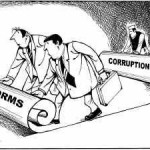“The RSS and the BJP were behind the Samjhauta Express, Mecca Masjid
and Malegaon blasts,” declared Union Home Minister Sushil Kumar Shinde
on January 20, 2012, adding that the training camps run by the RSS and
BJP were promoting ‘Hindu terrorism’. A day after Shinde’s declaration,
Hafiz Saeed, leader of the LeT, the Pakistan-based Islamist terrorist
outfit, called for a ban on the RSS. So Shinde is the witness for the
LeT to accuse the RSS of terror. Now look at the evidence, first the
blast onboard the Samjhauta Express from Pakistan in which 68 persons
were killed.
LeT Culprit, say UN, US
“Qasmani Arif...chief coordinator of the relations of the [LeT] with other organisations...has worked with Lashkar-e-Tayyiba to facilitate terrorist attacks including...the bombing of February 2007 in the Samjhauta Express in Panipat (India).” This is what resolution [No 1267] of the Committee on Sanctions of the United Nations Security Council [UNSC] dated 29.6.2009 declares. Adding that Qasmani was funded by Dawood Ibrahim and he did the fundraising for the LeT and the al-Qaida, the UNSC said, “In exchange for their support, al-Qaida provided support staff for the February 2007 bombing of the Samjhauta Express in Panipat.” This resolution is available on the UN site. Two days later, on July 1, 2009, the United States Treasury Department said in its press release: “Arif Qasmani has worked with the LeT to facilitate terrorist attacks, including...Samjota Express bombing.” The US named four Pakistanis, including Arif Qasmani as terrorists, under Executive Order No 13224. This press release is still on the US Treasury site. The United Nations Security Council and the US Treasury Department thus named the LeT, Qasmani and Dawood Ibrahim as accused in Samjhauta terror. This is just the beginning of the torrent of evidence pointing to the LeT and Pakistan.
Pakistan Minister’s Confession
Six months after the UN and US announced sanctions against the LeT and Qasmani, Pakistan Interior Minister Rehman Mallik himself admitted that Pakistani terrorists were involved in the Samjhauta blast, but with a rider that “some Pakistan-based Islamists had been hired by Lt Col Purohit to carry out the Samjhauta Express attack.” [India Today Online 24.1.2010]
Headley Involved in Samjhauta -- US Probe
Not just the UN. Or the US Treasury. Or just the admission of Pakistan’s Interior Minister. Independent investigation in the US revealed more. Some 10 months later, Sebastian Rotella, a US journalist, wrote in his investigative report titled ‘U.S. agencies were forewarned about suspect in 2008 Mumbai bombings’, that Faiza Outalha, the third wife of David Coleman Headley had confessed [in 2008, which was made public in 2010] that Headley was involved in the Samjhauta blast. Rotella added that Faiza felt that “she had been innocently used” in the Samjhauta terror. [The Washington Post 5.11.2010] A while later, in a follow up investigation, Sebastian Rotella disclosed in April 2008 that Faiza returned to the embassy in Islamabad with the tip about the 2008 Mumbai blast when she again linked him to the Samjhauta blast.
Rotella commented that though India and the US blamed the attack on Lashkar, the US authorities had not implicated Headley in that still-unsolved attack, however.[The Washington Post 14.11.2010] So, independent, neutral probe in the US also pointed to Pakistan and the LeT in Samjhauta blast.
Narco Test Pointed to SIMI Role
Even at the start of the Samjhauta investigation in 2007, the evidence clearly pointed to the role of the Students Islamic Movement of India [SIMI] and the LeT. India Today [19.9.2008] in its report titled ‘Pak hand in Mumbai train blasts, Samjhauta Express blasts, says Nagori’ gave meticulous account of the involvement of the LeT and Pakistan in the Samjhauta terror. The report was based on narco test testimonies of SIMI leaders. India Today said that the narcotic tests were carried out on general secretary of SIMI, Safdar Nagori; his brother Kamruddin Nagori and Amil Parvez in Bangalore in April 2007, three months after the Samjhauta blast; the results of the narco test of the SIMI leaders were available with the magazine; it revealed that SIMI activists had executed the Samjhauta blast, with the help of the Pakistani nationals from across the border; while Nagori was not directly involved, two members of SIMI, Ehtesham Siddiqui and Nasir, were directly involved; SIMI members, including Nagori’s brother Kamaruddin, were involved in the Samjhatua blast; for executing the Samjhauta blast, the Pakistanis had purchased the suitcase cover from Kataria Market in Indore and one of the members from SIMI had helped the Pakistanis to get the suitcase cover stitched. Investigation had established that in the Samjhauta blast, five bombs packed in suitcases and activated by timer switches were used.
Conspiracy by Maharashtra Police?
Why were these clinching pieces of evidence not pursued? How the blame shifted from the Islamists to the Hindus? Some elements in the Maharashtra Police appears to have colluded in linking the 2008 Malegaon blast to the Samjhauta blast. When leads were thus pointing to Pakistan and SIMI as partners in the Samjhauta blast in November 2008, as an anti-climax, the Maharashtra Anti-Terror Squad [ATS] shockingly told the Special Court through the public prosecutor that Col Purohit allegedly involved in the Malegaon blast in which RDX was used, had supplied RDX for the Samjhauta blast though one ‘Bhagwan’. [The Indian Express 15.11.2008] Within the next 48 hours, [17.11.2009] India Today online refuted the ATS claim saying that Samjhauta investigators had told India Today that a study of the blast by the National Security Guard(NSG) said that no RDX, but Potassium Chlorate and Sulphur, had been used as explosives. The magazine also recalled that immediately after the blasts, then Union Home Minister Shivraj Patil told the media that not RDX, but, a ‘new type of explosive’ had been used to bomb the Samjhauta Express. On that very day [17.11.2009] the ATS counsel retracted the statement he had made earlier involving Col Purohit in the Samjhauta blast. [The Hindu dt19.11.2008]. But the damage was done in the 48 hours. Immediately, Pakistan said that it would raise the issue of Purohit’s involvement in Samjhauta at the Secretary-level meeting on November 25, 2008. Finally on January 20, 2009, the Maharashtra ATS officially denied that Col Purohit had supplied RDX for Samjhauta. This was how the Samjhauta focus -- later the blame -- shifted from the LeT and the SIMI to Purohit and via Purohit on to Saffron. The Maharashtra ATS’ attempt to link Malegaon 2008 to Samjhauta, which shifted the focus away from the LeT on to Purohit, needs to be probed particularly given Dawood Ibrahim’s deep influence on Maharashtra Police.
If Shinde is telling the truth, then the United Nations Security Council and the US Treasury Department are fabricating charges against Qasmani, Dawood and the LeT; Faiza Outallah and The Washington Post are telling lies to fix the LeT and Pakistan; the SIMI officials’ narco evidence is fabricated; and Rehman Mallik’s confession about Pakistani involvement is false. Can it be more ridiculous? It is clearly the lies of Shinde, the vote bank politician versus all neutral evidence. If this was how the Samjhauta probe was perverted, in the Malegaon 2006 blast the Maharashtra ATS has filed a chargesheet where the SIMI cadre had confessed to their role in the blast. But the CBI is procuring confessions to exonerate them and implicate others, Hindus in the case. So Malegaon 2006, is becoming a case of confession vs confession! In Malegaon 2008 blasts, Col Purohit and his associates have been charged and the evidence submitted in the Court shows that the accused in the Malegaon 2008 case were planning to assassinate RSS chief Mohan Bhagwat and Indresh Kumar for taking money from the ISI! [Outlook 19.7.2010] How could the RSS which is the target of the conspirator itself be the conspirator? Does Shinde know what he is talking?
QED: Shinde now has a good companion in his mission against the RSS in Hafeez Saeed, boss of the global terror outfit LeT. Can a Home Minister tell more deadly lies against his own country’s interests, all for just a few million votes?
S Gurumurthy is a well-known commentator on political and economic issues.
E-mail: comment@gurumurthy.net
Source: http://newindianexpress.com/opinion/article1432883.ece
LeT Culprit, say UN, US
“Qasmani Arif...chief coordinator of the relations of the [LeT] with other organisations...has worked with Lashkar-e-Tayyiba to facilitate terrorist attacks including...the bombing of February 2007 in the Samjhauta Express in Panipat (India).” This is what resolution [No 1267] of the Committee on Sanctions of the United Nations Security Council [UNSC] dated 29.6.2009 declares. Adding that Qasmani was funded by Dawood Ibrahim and he did the fundraising for the LeT and the al-Qaida, the UNSC said, “In exchange for their support, al-Qaida provided support staff for the February 2007 bombing of the Samjhauta Express in Panipat.” This resolution is available on the UN site. Two days later, on July 1, 2009, the United States Treasury Department said in its press release: “Arif Qasmani has worked with the LeT to facilitate terrorist attacks, including...Samjota Express bombing.” The US named four Pakistanis, including Arif Qasmani as terrorists, under Executive Order No 13224. This press release is still on the US Treasury site. The United Nations Security Council and the US Treasury Department thus named the LeT, Qasmani and Dawood Ibrahim as accused in Samjhauta terror. This is just the beginning of the torrent of evidence pointing to the LeT and Pakistan.
Pakistan Minister’s Confession
Six months after the UN and US announced sanctions against the LeT and Qasmani, Pakistan Interior Minister Rehman Mallik himself admitted that Pakistani terrorists were involved in the Samjhauta blast, but with a rider that “some Pakistan-based Islamists had been hired by Lt Col Purohit to carry out the Samjhauta Express attack.” [India Today Online 24.1.2010]
Headley Involved in Samjhauta -- US Probe
Not just the UN. Or the US Treasury. Or just the admission of Pakistan’s Interior Minister. Independent investigation in the US revealed more. Some 10 months later, Sebastian Rotella, a US journalist, wrote in his investigative report titled ‘U.S. agencies were forewarned about suspect in 2008 Mumbai bombings’, that Faiza Outalha, the third wife of David Coleman Headley had confessed [in 2008, which was made public in 2010] that Headley was involved in the Samjhauta blast. Rotella added that Faiza felt that “she had been innocently used” in the Samjhauta terror. [The Washington Post 5.11.2010] A while later, in a follow up investigation, Sebastian Rotella disclosed in April 2008 that Faiza returned to the embassy in Islamabad with the tip about the 2008 Mumbai blast when she again linked him to the Samjhauta blast.
Rotella commented that though India and the US blamed the attack on Lashkar, the US authorities had not implicated Headley in that still-unsolved attack, however.[The Washington Post 14.11.2010] So, independent, neutral probe in the US also pointed to Pakistan and the LeT in Samjhauta blast.
Narco Test Pointed to SIMI Role
Even at the start of the Samjhauta investigation in 2007, the evidence clearly pointed to the role of the Students Islamic Movement of India [SIMI] and the LeT. India Today [19.9.2008] in its report titled ‘Pak hand in Mumbai train blasts, Samjhauta Express blasts, says Nagori’ gave meticulous account of the involvement of the LeT and Pakistan in the Samjhauta terror. The report was based on narco test testimonies of SIMI leaders. India Today said that the narcotic tests were carried out on general secretary of SIMI, Safdar Nagori; his brother Kamruddin Nagori and Amil Parvez in Bangalore in April 2007, three months after the Samjhauta blast; the results of the narco test of the SIMI leaders were available with the magazine; it revealed that SIMI activists had executed the Samjhauta blast, with the help of the Pakistani nationals from across the border; while Nagori was not directly involved, two members of SIMI, Ehtesham Siddiqui and Nasir, were directly involved; SIMI members, including Nagori’s brother Kamaruddin, were involved in the Samjhatua blast; for executing the Samjhauta blast, the Pakistanis had purchased the suitcase cover from Kataria Market in Indore and one of the members from SIMI had helped the Pakistanis to get the suitcase cover stitched. Investigation had established that in the Samjhauta blast, five bombs packed in suitcases and activated by timer switches were used.
Conspiracy by Maharashtra Police?
Why were these clinching pieces of evidence not pursued? How the blame shifted from the Islamists to the Hindus? Some elements in the Maharashtra Police appears to have colluded in linking the 2008 Malegaon blast to the Samjhauta blast. When leads were thus pointing to Pakistan and SIMI as partners in the Samjhauta blast in November 2008, as an anti-climax, the Maharashtra Anti-Terror Squad [ATS] shockingly told the Special Court through the public prosecutor that Col Purohit allegedly involved in the Malegaon blast in which RDX was used, had supplied RDX for the Samjhauta blast though one ‘Bhagwan’. [The Indian Express 15.11.2008] Within the next 48 hours, [17.11.2009] India Today online refuted the ATS claim saying that Samjhauta investigators had told India Today that a study of the blast by the National Security Guard(NSG) said that no RDX, but Potassium Chlorate and Sulphur, had been used as explosives. The magazine also recalled that immediately after the blasts, then Union Home Minister Shivraj Patil told the media that not RDX, but, a ‘new type of explosive’ had been used to bomb the Samjhauta Express. On that very day [17.11.2009] the ATS counsel retracted the statement he had made earlier involving Col Purohit in the Samjhauta blast. [The Hindu dt19.11.2008]. But the damage was done in the 48 hours. Immediately, Pakistan said that it would raise the issue of Purohit’s involvement in Samjhauta at the Secretary-level meeting on November 25, 2008. Finally on January 20, 2009, the Maharashtra ATS officially denied that Col Purohit had supplied RDX for Samjhauta. This was how the Samjhauta focus -- later the blame -- shifted from the LeT and the SIMI to Purohit and via Purohit on to Saffron. The Maharashtra ATS’ attempt to link Malegaon 2008 to Samjhauta, which shifted the focus away from the LeT on to Purohit, needs to be probed particularly given Dawood Ibrahim’s deep influence on Maharashtra Police.
If Shinde is telling the truth, then the United Nations Security Council and the US Treasury Department are fabricating charges against Qasmani, Dawood and the LeT; Faiza Outallah and The Washington Post are telling lies to fix the LeT and Pakistan; the SIMI officials’ narco evidence is fabricated; and Rehman Mallik’s confession about Pakistani involvement is false. Can it be more ridiculous? It is clearly the lies of Shinde, the vote bank politician versus all neutral evidence. If this was how the Samjhauta probe was perverted, in the Malegaon 2006 blast the Maharashtra ATS has filed a chargesheet where the SIMI cadre had confessed to their role in the blast. But the CBI is procuring confessions to exonerate them and implicate others, Hindus in the case. So Malegaon 2006, is becoming a case of confession vs confession! In Malegaon 2008 blasts, Col Purohit and his associates have been charged and the evidence submitted in the Court shows that the accused in the Malegaon 2008 case were planning to assassinate RSS chief Mohan Bhagwat and Indresh Kumar for taking money from the ISI! [Outlook 19.7.2010] How could the RSS which is the target of the conspirator itself be the conspirator? Does Shinde know what he is talking?
QED: Shinde now has a good companion in his mission against the RSS in Hafeez Saeed, boss of the global terror outfit LeT. Can a Home Minister tell more deadly lies against his own country’s interests, all for just a few million votes?
S Gurumurthy is a well-known commentator on political and economic issues.
E-mail: comment@gurumurthy.net
Source: http://newindianexpress.com/opinion/article1432883.ece

 Data
available from hydrological surveys suggest that most of the reservoirs
across the country have accumulated silt that has reduced the storage
capacity of dams.
Data
available from hydrological surveys suggest that most of the reservoirs
across the country have accumulated silt that has reduced the storage
capacity of dams.







